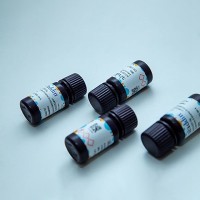Metabolic Labeling and Immunoprecipitation of Drosophila Proteins
互联网
- Abstract
- Table of Contents
- Materials
- Literature Cited
Abstract
The genetics of Drosophila is a powerful tool in the analysis of mutants and mutant proteins. Cultures of cells derived from wild?type or mutant flies can be pulse labeled to biosynthetically label the proteins made by the cells. Immunoprecipitation (and subcellular fractionation) are used to characterize the expression of specific proteins.
Table of Contents
- Basic Protocol 1: Labeling and Immunoprecipitation of Proteins from Drosophila S2M3 Cells
- Support Protocol 1: Growth and Maintenance of Cultured Drosophila S2M3 Cells
- Reagents and Solutions
- Commentary
Materials
Basic Protocol 1: Labeling and Immunoprecipitation of Proteins from Drosophila S2M3 Cells
Materials
Support Protocol 1: Growth and Maintenance of Cultured Drosophila S2M3 Cells
Materials
|
Figures
Videos
Literature Cited
| Literature Cited | |
| Bunch, T., Grinblat, Y., and Goldstein, L.S. 1988. Characterization and use of the Drosophila metallothionein promoter in cultured Drosophila melanogaster cells. Nucl. Acids Res. 16:1043‐1061. | |
| Buzin, C.H. and Petersen, N.S. 1982. A comparison of the multiple heat‐shock proteins in cell lines and larval salivary glands by two‐dimensional gel electrophoresis. J. Mol. Biol. 158:181‐201. | |
| Chen, C. and Okayama, H. 1987. High‐efficiency transformation of mammalian cells by plasmid DNA. Mol. Cell. Biol. 7:2745‐2752. | |
| Cherbas, L., Moss, R., and Cherbas, P. 1994. Transformation techniques for Drosophila cell lines. Methods Cell Biol. 44:161‐179. | |
| Echalier, G. 1997. Drosophila Cells in Culture. Academic Press, San Diego. | |
| Echalier, G. and Ohanessian, A. 1970. In vitro culture of Drosophila melanogaster embryonic cells. In Vitro 6:162‐172. | |
| Jaynes, J.B. and O'Farrell, P.H. 1988. Activation and repression of transcription by homeodomain‐containing proteins that bind a common site. Nature 336:744‐749. | |
| Schneider, I. 1972. Cell lines derived from late embryonic stages of Drosophila melanogaster. J. Embryol. Exp. Morphol. 27:353‐365. | |
| Zak, N.B. and Shilo, B.Z. 1990. Biochemical properties of the Drosophila EGF receptor homolog (DER) protein. Oncogene 5:1589‐1593. | |
| Key Reference | |
| Echalier, G. 1997. See above. | |
| An excellent and comprehensive description of Drosophila cell culture protocols that includes methods for generating both primary and continuous cell lines, media formulations, and experimental uses of Drosophila cells. |









